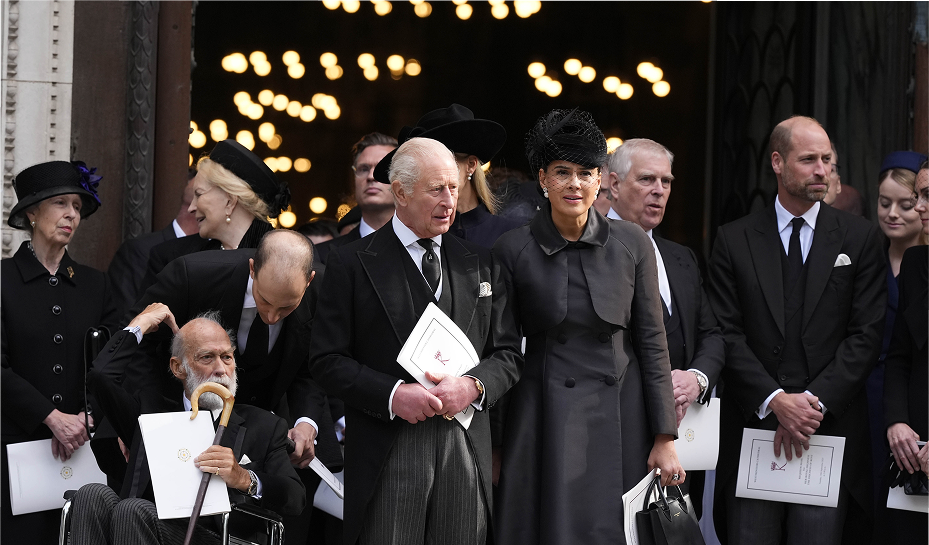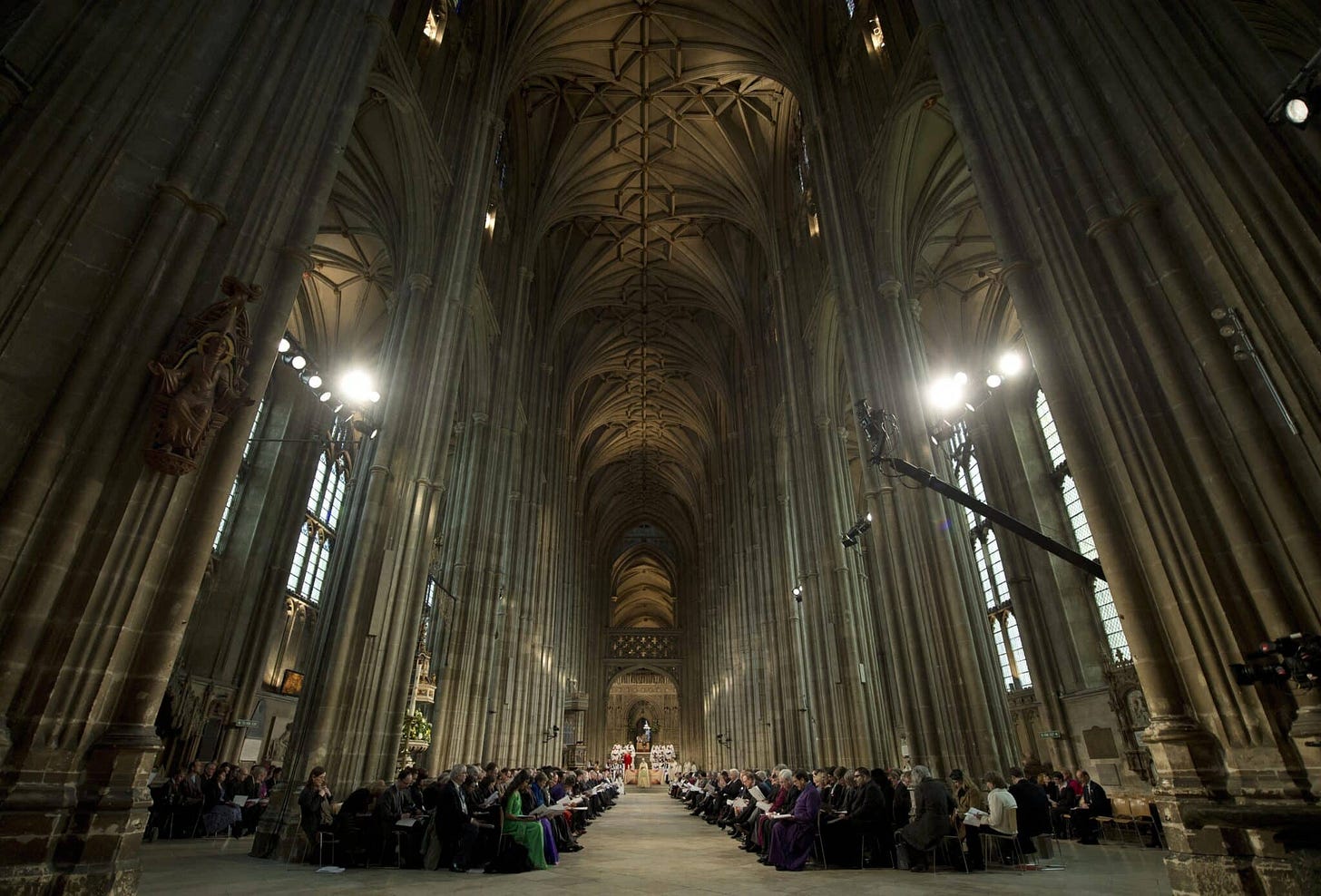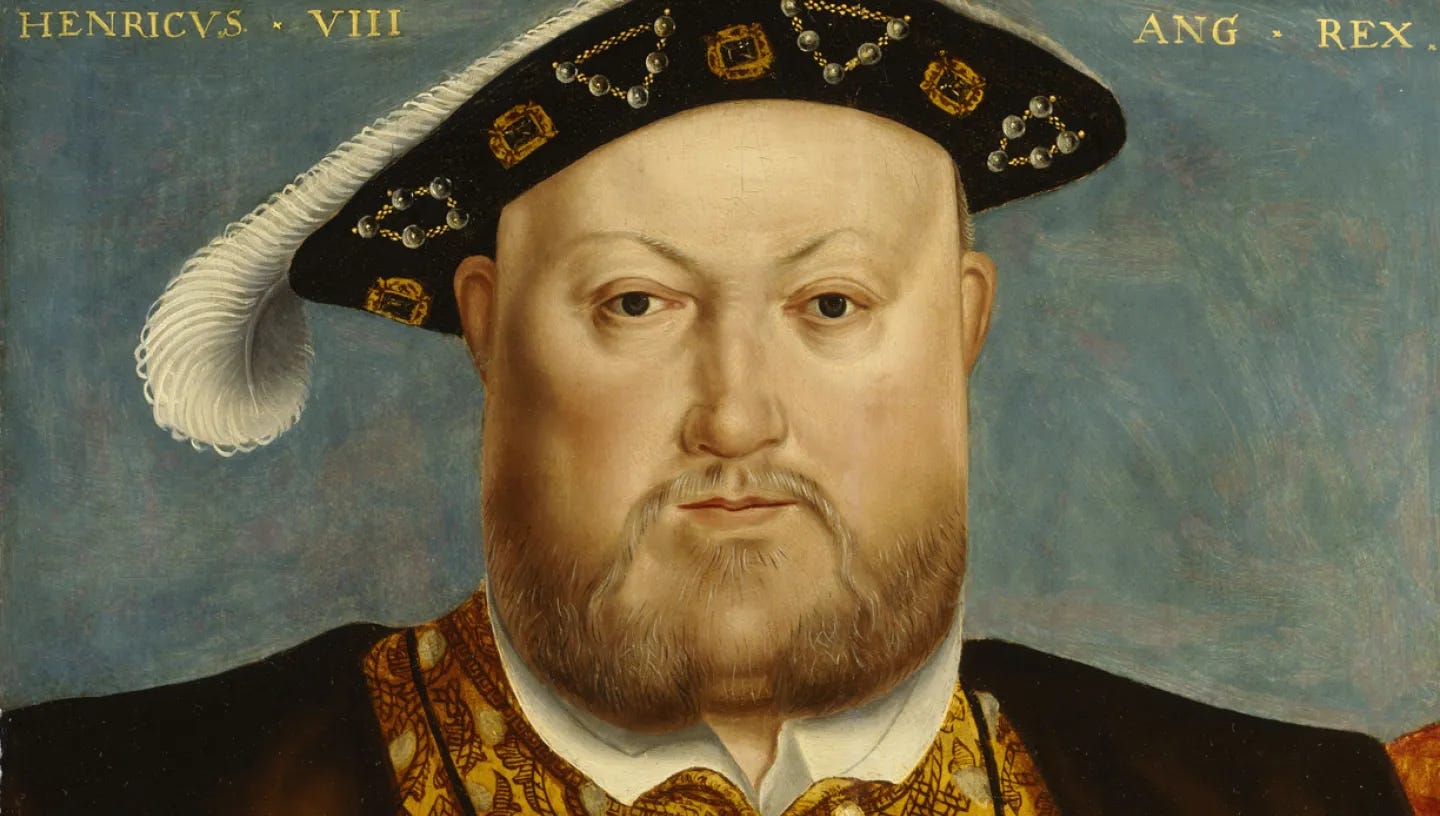Are we witnessing the end of Anglicanism and the English Reformation-Revolution?
Picture yourself growing up in Anti-Catholic Protestant England. Here’s a selection of some of the cute nursery rhymes you might have hummed as a child:
Here comes the Pope, all dressed in white;
Kill him quick, or he’ll say Mass tonight.
– Cruel playground rhyme chanted by Protestant children in the 18th-19th century England
Or how about this little ditty?
Remember, remember, the Fifth of November,
Gunpowder, treason and plot.
I see no reason why gunpowder treason
Should ever be forgot.
… A rope, a rope, to hang the Pope,
A penn'orth of cheese to choke him,
A pint of beer to wash it down,
And a jolly good fire to burn him.
- From Guy Fawkes Day or the Gunpowder Plot of 1605, known as “The Bonfire Prayer”
From these ashes, major Catholic trends are emerging in the United Kingdom. Is this a new Oxford Movement? A New English Renaissance?
Remember, remember, the 9th of April …
Remember, remember, the 7th of July …
Remember, remember, the 16th of September …
Sept. 16, 2025: First Royal Catholic Funeral, First Reigning Monarch to Attend Catholic Mass on UK Soil
According to The Catholic Herald, the funeral of the Duchess of Kent marked the first royal Catholic funeral and the first time a reigning monarch has attended Catholic Mass on UK soil in a formal capacity since the Reformation.
The Prince and Princess of Wales joined the Duke of Kent and his three children for the Requiem Mass, the first Catholic funeral of a royal in modern times.
The music played at the funeral included Mozart’s Ave Verum Corpus, which was chosen by the duchess as her favorite hymn during her appearance on Desert Island Discs in 1990. Ironically, this meant the Anglican royal family was listening to "Hail, True Body", Mozart’s hymn about the Real Presence of Jesus in the Eucharist. Most Anglicans, given the Lutheran influence during the English Reformation-Revolution, only subscribe to a symbolic understanding of the Christ in the Eucharist.
July 7, 2025: First Mass Presided by Papal Nuncio at Canterbury Cathedral; Feast of Thomas a Becket
On July 7, 2025, the Holy Sacrifice of the Mass was celebrated at Canterbury Cathedral by the Papal Nuncio to Great Britain, Archbishop Miguel Maury Buendía. This was the first occasion in modern history that a papal nuncio presided over a Mass in the historic Anglican cathedral.
Catholic Masses have taken place in Canterbury Cathedral since the Reformation. Every year on July 7, for example, the Dean of Canterbury Cathedral allows the Catholic parish of St. Thomas of Canterbury to celebrate Mass in honor of St. Thomas Becket. Nevertheless, the involvement of the papal delegate is highly significant, given the historically “anti-papist” sentiment in England since the days of King Henry VIII.
The Mass celebrated the Feast of the Translation of St. Thomas Becket. The “translation” is the ceremonial transfer of Becket’s remains in 1220 from his original tomb in the crypt of Canterbury Cathedral to a grand shrine behind the high altar. This event occurred fifty years after his martyrdom and was attended by the teenage King Henry III, a host of European church leaders, and thousands of pilgrims.
April 9, 2025: Catholic Population Exceeds Anglicans, First Time
As of April 9, 2025, Catholics are on course to outnumber Anglicans in Great Britain. Younger churchgoers now outnumber their Anglican brethren by more than two to one, a report by the Bible Society reveals.
Executive summary from The Catholic Herald:
A “quiet revival” in UK Catholicism appears to be occurring, especially among those age groups referred to as Generation Z and younger Millennials, reports The Times of London, while noting that Catholics are rapidly catching up with Anglican numbers across all age groups.
It means that Catholicism could soon overtake Anglicanism to become the country’s largest denomination of worshippers for the first time since the English Reformation initiated by King Henry VIII in 1527. Anglicans could even slip into third place behind Pentecostals among churchgoers aged under 35 years of age.
Here are the numbers:1
According to the surveys, in 2018 Anglicans made up 30% of regular churchgoers aged between 18 and 34 – including all adult members of Generation Z and the youngest cohort of Millennials – while Catholics made up 22% and Pentecostals 10%. By 2024, Anglicans made up just 20% of this group while Catholics made up 41%. Pentecostals are now not far behind Anglicans at 18%.
In 2018 the survey found that across all ages, 41% of those who attend church at least once a month were Anglican, 23% were Catholic and 4% were Pentecostal. By 2024, the Anglican share had fallen to 34%, the Catholic share is “now close behind” at 31%, while the Pentecostal share has risen to 10%, the Bible Society report shows.
Figures collated by the Catholic Church in England and Wales also show a rise in attendance at Sunday mass since the pandemic, notes The Times, rising from 390,000 in 2021 to 555,000 in 2023, though they also indicate these are down from pre-pandemic figures of 702,000 in 2019. Catholics have already overtaken Protestants in Northern Ireland, data from the 2021 census shows.
Millennial or Gen Z? According to the Pew Research Center, anyone born between 1981 and 1996 is considered a Millennial, and anyone born from 1997 onward is part of the new generation termed Gen Z.
It’s not all good news. This is a period of rampant secularization across the UK: “Christians now make up the lowest ever proportion of the population, slipping below half for the first time in 2021 to 46.2 per cent, mainly driven by the growth in people with no religion, according to census figures.”
Any yet, the new report by the Bible Society suggests that the proportion of people in Britain attending church actually grew by more than half between 2018 and 2024. “The Quiet Revival” report also showed that men (13%) are more likely to attend church than women (10%), reversing the standard view of gender participation. Bible reading has also grown.
The Gradual Softening of Anti-Catholicism in England
The relationship between the British Royal Family and the Roman Catholic Church has been shaped by centuries of history.
Glorious Revolution of 1688: King James II, the last Catholic monarch of Britain, is deposed and replaced by the Protestant William III and Mary II.
Act of Settlement 1701: Catholics barred from the line of succession, establishing a constitutional link between the monarchy and the Church of England that lasted for centuries. The Act of Settlement also barred members of the Royal Family from marrying Catholics under pain of exclusion from the line of succession. This and other measures effectively prevented the Royal Family from openly participating in Catholic rites or ceremonies for more than three centuries.
Succession to the Crown Act 2013: Eased some of the restrictions of the Act of Settlement, ending the disqualification of heirs who marry Catholics, though the monarch must remain Protestant. Allowed members of the Royal Family to engage with the Catholic Church more openly, without threatening the constitutional framework. Several royals have maintained private Catholic connections despite this historic barrier. For the Duke of Kent and other minor royals, practicing Catholicism has long been part of family life, even if rarely visible to the public.
According to YouGov surveys commissioned by the Bible Society, which looked at more than 13,000 people in 2024 and 19,000 people in 2018, the growth in attendance has mainly been seen in Catholic and Pentecostal churches. The increase among younger people has been found especially with young men.














2 Comments